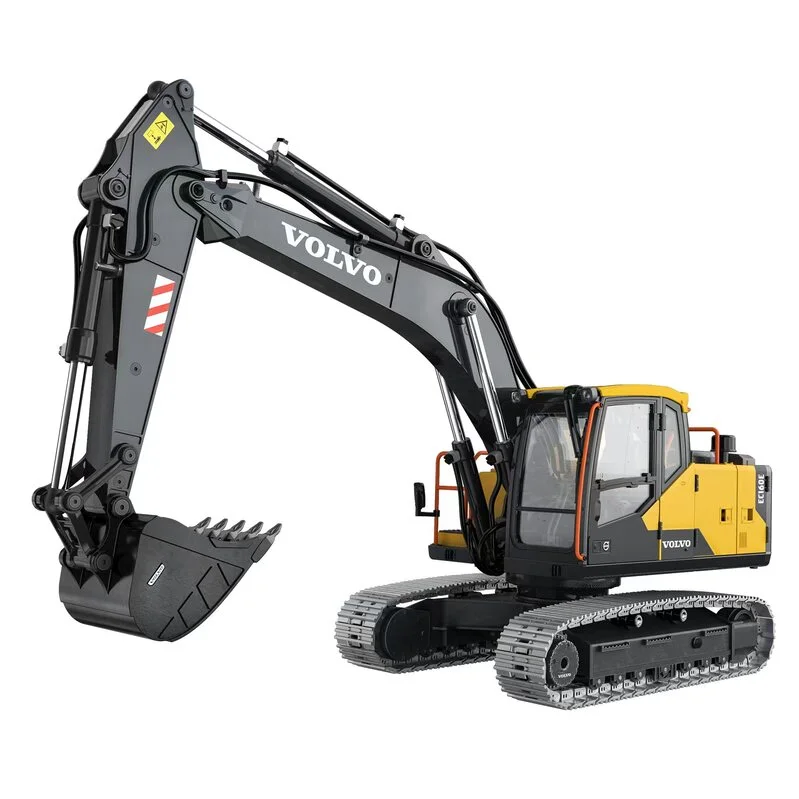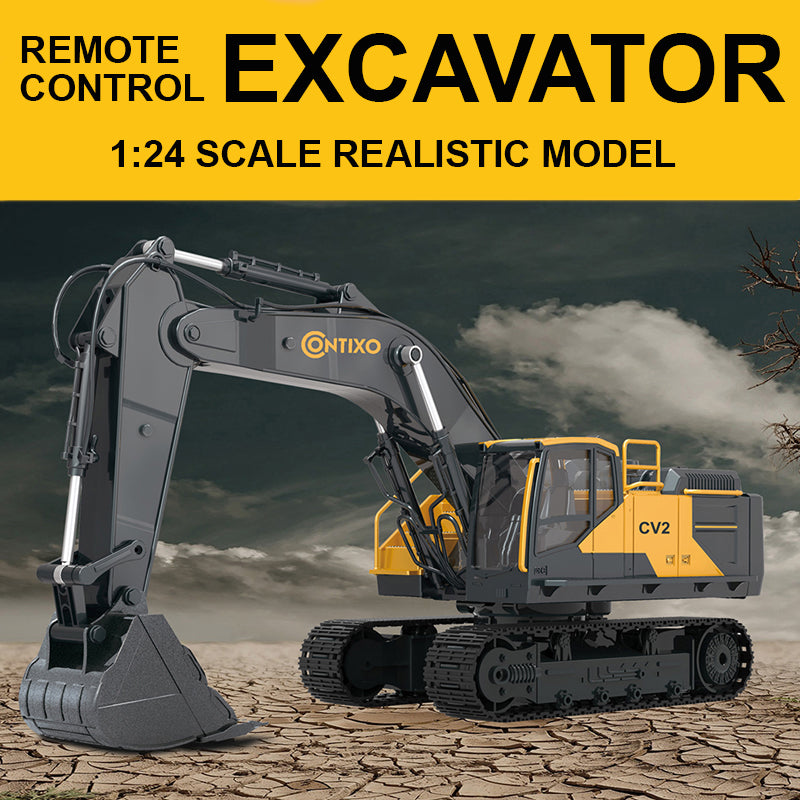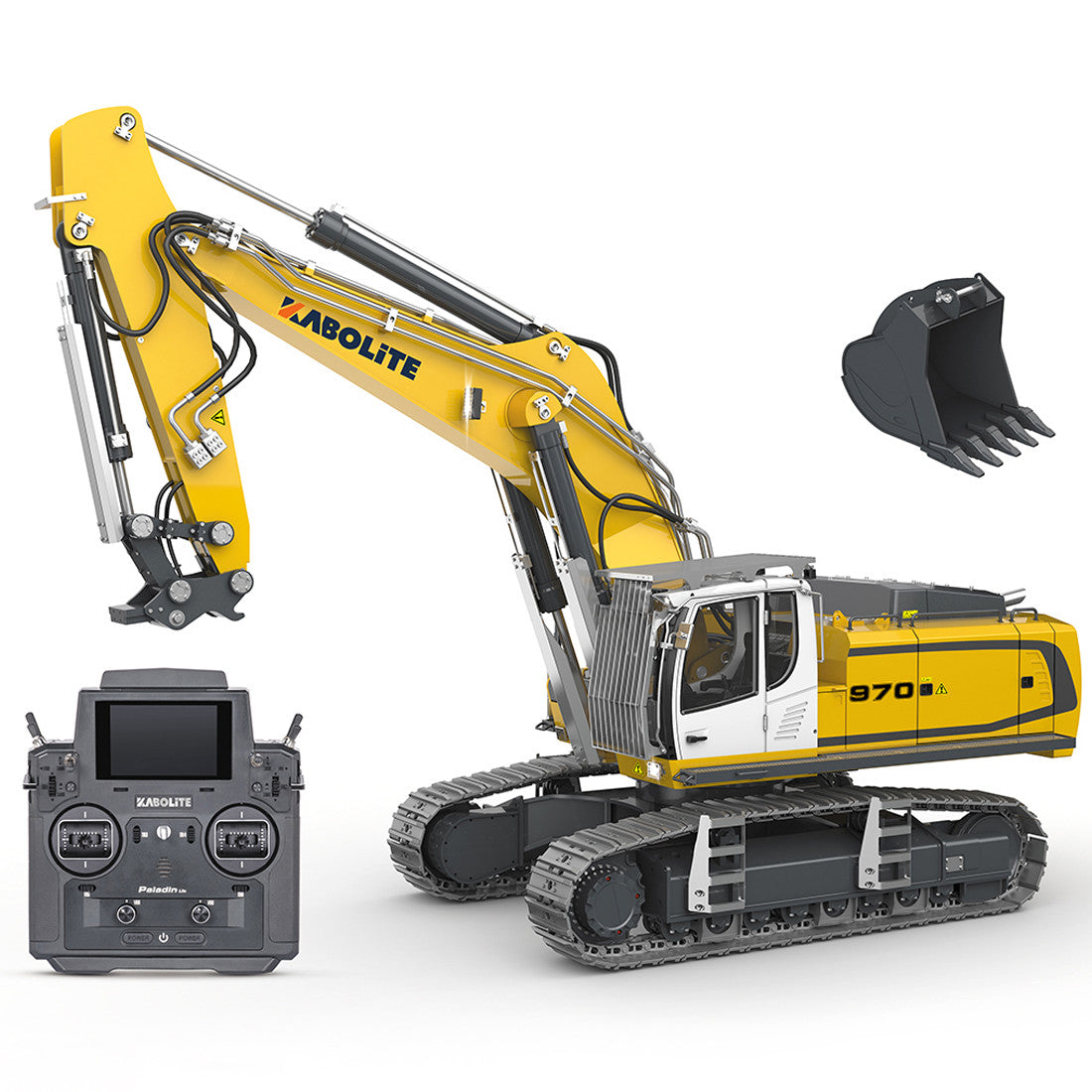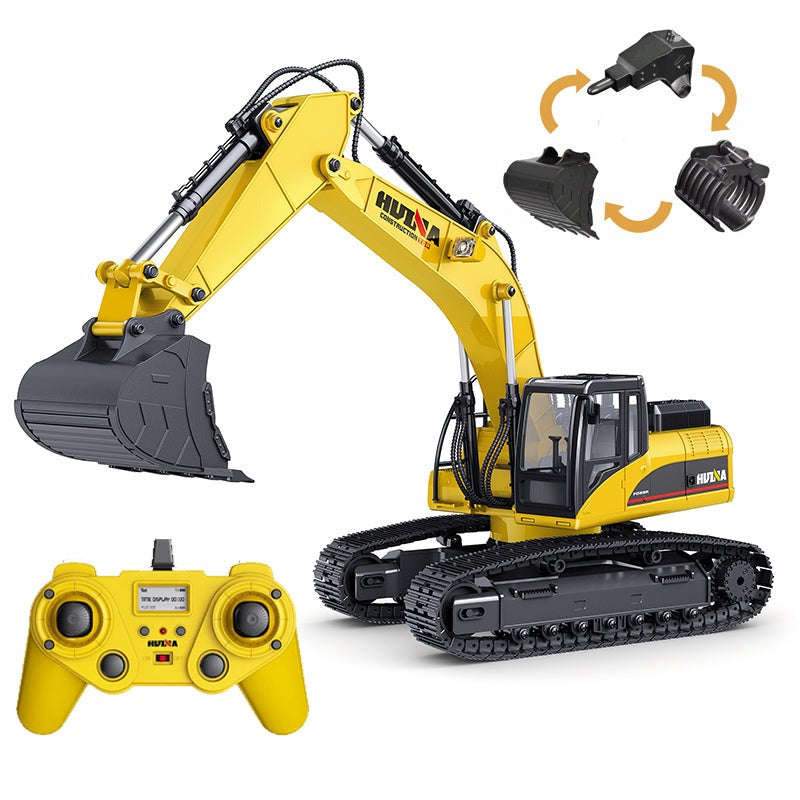The Necessary Features of Excavator That Keep It a Must-Have Tool
Excavators are indispensable in the construction and landscaping sectors. Their versatile attachments enable a variety of jobs, from excavating to demolition. Furthermore, they boast superior excavating deepness and reach, powered by durable engines. Driver comfort and small layouts improve use in numerous environments. What absolutely establishes excavators apart are their sophisticated hydraulic systems and longevity. Understanding these functions can clear up why they are thought about crucial tools on any type of job site.
Functional Accessories for Enhanced Performance
Excavators are effective makers on their own, the addition of functional attachments greatly boosts their performance. These add-ons change a basic excavator into a multi-purpose tool, appropriate for a selection of jobs. Containers, for instance, can be found in numerous sizes and shapes, making it possible for drivers to dig, scoop, and move products efficiently. Hydraulic thumbs can be included for enhanced gripping and handling of bulky things, such as logs or rocks.Furthermore, specialized accessories like breakers and augers allow for exploration and demolition work, expanding the excavator's energy on building and construction websites. remote control excavator. Grapples are an additional alternative, suitable for arranging and moving debris. This adaptability not just raises efficiency however additionally minimizes the demand for several machines, conserving time and costs. By furnishing excavators with the appropriate attachments, operators can take on diverse projects, making them crucial in the construction sector
Superior Digging Deepness and Get To
Excavators are created with exceptional digging depth and reach, enabling them to steer in tight spaces and accessibility hard-to-reach locations. This capacity is critical for different building and construction and excavation projects, where conventional machinery may fall brief. With flexible boom arms and extendable tracks, excavators can conveniently navigate unequal terrain while preserving stability.The digging depth can vary considerably among versions, typically ranging from 10 to 25 feet, depending upon the style and function. This function enables operators to dig deep into foundations, trenches, and various other deep frameworks effectively. Additionally, the reach of an excavator permits exact excavating and product handling without rearranging the maker often, conserving time and labor costs.Ultimately, the premium digging deepness and reach of excavators make them indispensable for experts seeking to complete complex tasks with accuracy and effectiveness. Their convenience improves efficiency on task websites, showcasing them as an essential device in contemporary construction.
Powerful Engine Efficiency

Effective engine efficiency plays a pivotal function in the capabilities of an excavator when it comes to effectiveness and productivity on building and construction sites. A durable engine creates considerable horsepower, allowing the equipment to take on durable jobs easily - remote control excavator. This toughness converts into faster cycle times, making it possible for drivers to total projects more quickly.Additionally, powerful engines supply the needed torque to manage challenging surfaces and varied loads, making certain that the excavator can perform effectively under different conditions. Whether it is lifting, excavating, or relocating products, the engine's performance straight affects the overall functional performance of the machine.Furthermore, advancements in engine technology have led to boosted fuel effectiveness, reducing operational costs while maintaining power outcome. Ultimately, the engine's performance serves as the backbone of an excavator, attesting its condition as an indispensable tool in the building and construction industry
Advanced Hydraulic Systems

Improved Raising Capability
A considerable enhancement in lifting ability can be connected to sophisticated hydraulic systems found in modern excavators. These systems use high-pressure liquid to create greater pressure, permitting operators to lift heavier lots easily. The design behind these hydraulics warranties peak performance, providing an excellent power-to-weight ratio that boosts overall effectiveness. Consequently, excavators can take on demanding tasks, such as raising large products or tools, without jeopardizing stability. Additionally, the robust design of hydraulic components adds to raised resilience and integrity, making them appropriate for numerous building environments. This improved lifting capability not only decreases the time required for jobs but also lessens the need for additional machinery, showing important for both productivity and cost-effectiveness in the building industry.
Boosted Precision Control
Typical excavators typically battled with precision, modern-day hydraulic systems have actually transformed control systems, making it possible for drivers to execute jobs with exceptional precision. These innovative systems utilize proportional control valves that permit smoother and much more receptive activities, substantially reducing the margin for mistake. Operators can now carefully tune the excavator's movements, making it simpler to browse limited areas and handle fragile products. Enhanced responses systems better notify drivers of real-time efficiency, ensuring ideal coordination between the equipment and driver. This boosted precision not just enhances efficiency yet additionally boosts safety on work websites, lessening the threat of accidents. Because of this, modern-day excavators furnished with advanced hydraulic systems are invaluable tools for building and excavation jobs needing meticulous precision.
Operator Comfort and Presence
Operator convenience and presence are vital parts in the layout of modern-day excavators (remote control excavator). Functions such as ergonomic seat design, improved exposure alternatives, and efficient control site web formats substantially boost the operator's experience and efficiency. Focusing on these facets warranties that drivers can function properly and safely in numerous problems
Ergonomic Seat Design
Comfort and visibility are vital in excavator style, with the ergonomic seat playing an important role in enhancing the driver's experience. An ergonomic seat is crafted to support the operator's body, reducing fatigue throughout long hours of procedure. Flexible functions, such as seat height, backrest angle, and back assistance, deal with individual preferences and promote suitable position. These modifications improve comfort and make it possible for the driver to keep emphasis on jobs without pain. Furthermore, a properly designed seat can supply far better side support, permitting for smoother handling when the excavator functions. This thoughtful layout not only increases efficiency yet additionally adds to total safety and security, guaranteeing that drivers can perform their responsibilities effectively and efficiently.
Boosted Visibility Functions
The layout of an excavator extends past just the seat, with enhanced exposure features playing a significant role in operator comfort and total security. Big home windows and tactically located mirrors give operators with a clear sight of their surroundings, lessening dead spots. This layout factor to consider enables for far better spatial recognition, which is vital in busy workplace. Furthermore, several excavators include rearview cams and progressed surveillance systems that aid operators in navigating limited areas. The assimilation of these exposure features not just advertises safety however additionally lowers operator exhaustion by enabling easier tracking of job locations. Eventually, enhanced presence adds to much more effective operations and aids assure that excavators can do their jobs effectively and safely.
Control Design Effectiveness
While maneuvering facility job sites, an efficient control design significantly boosts both driver convenience and presence. A properly designed you could try here control setup warranties that drivers can access necessary features with very little effort, lowering exhaustion throughout long hours. Ergonomic joystick placements and instinctive switch plans permit seamless operation, allowing drivers to maintain emphasis on the job available. In addition, clear presence of both the job location and the control panel is vital for security and accuracy. Modern excavators often integrate adjustable seats and control settings to suit various operator preferences, additionally boosting convenience. Eventually, an attentively developed control format not only boosts performance yet likewise promotes a more secure working setting by allowing drivers to react quickly to altering problems.
Compact Style for Urban Environments
As urban building sites frequently face space restrictions, a compact layout becomes vital for excavators running in these environments. These equipments are engineered to browse tight rooms, permitting efficient ability to move in jampacked work sites. A reduced footprint allows them to work carefully to existing structures, reducing disturbance and making the most of productivity.The compact layout often includes much shorter tracks and a tighter turning radius, facilitating procedure in narrow streets and confined locations. Light-weight products contribute to ease of transportation, making it simpler to move the excavator from one location to another within the metropolitan landscape.Additionally, several small excavators are outfitted with functions such as extendable arms and flexible attachments, boosting their functionality while preserving a little dimension. This flexibility allows drivers to take on a range of tasks, from digging to demolition, all while fitting flawlessly into the restrictions of metropolitan environments.

Sturdiness and Upkeep Considerations
Longevity stands as a vital factor in the performance and longevity of excavators, particularly popular metropolitan atmospheres. These equipments go through extensive conditions, including differing dirt types, extreme temperature levels, and high-frequency usage. Top notch products and robust building and construction are required for ensuring that excavators can withstand these difficulties without endangering functionality.Regular upkeep is just as important in protecting longevity. Arranged examinations, prompt oil adjustments, and the replacement of used components add significantly to an excavator's life expectancy. Operators needs to likewise focus on hydraulic systems, tracks, and undercarriages, as these parts often birth the force of wear and tear.Investing in durable excavators with substantial upkeep strategies boosts dependability and minimizes downtime, eventually resulting in boosted efficiency on building sites. Understanding the interaction in between durability and upkeep is vital for anyone taking into consideration the purchase of an excavator for city projects.
Often Asked Concerns
Exactly How Do Excavators Compare to Other Building Tools?
Excavators attract attention among building equipment as a result of their adaptability, allowing tasks such as grading, excavating, and training. Contrasted to others, their hydraulic abilities use better effectiveness and power, making them crucial on numerous task websites.
What Safety Features Are Consisted Of in Modern Excavators?
Modern excavators integrate various security features, consisting of rollover defense systems, alarm systems, and progressed exposure enhancements. These components work together to minimize threats, ensuring operator safety and security while enhancing performance on building websites and other demanding atmospheres.

Can Excavators Be Made Use Of in Wintertime Issues?
Excavators can without a doubt be utilized in winter season conditions, given they are geared up with appropriate winter accessories and safety measures are taken. Appropriate upkeep and adjustments improve their efficiency, making sure effective operation despite difficult weather condition circumstances.
What Is the Typical Life Expectancy of an Excavator?
The typical lifespan of an excavator normally ranges from 7,000 to 10,000 hours of procedure. This duration can significantly depend upon upkeep practices, running problems, and the specific version's toughness and design features.
Exactly how Do I Pick the Right Excavator Size for My Task?
Choosing the ideal excavator dimension includes evaluating task range, site problems, and material kinds. Think about variables like reach, depth requirements, and weight capacity to assure optimal why not check here effectiveness and safety and security throughout procedure. Dimension matters substantially in project success. Additionally, the reach of an excavator enables for precise digging and product handling without repositioning the device frequently, saving time and labor costs.Ultimately, the remarkable digging deepness and reach of excavators make them important for specialists seeking to complete complex tasks with precision and effectiveness. Convenience and visibility are extremely important in excavator layout, with the ergonomic seat playing a necessary role in improving the operator's experience. The design of an excavator extends beyond simply the seat, with boosted visibility functions playing a substantial role in operator convenience and total safety and security. Modern excavators usually incorporate flexible seating and control settings to accommodate different operator choices, even more boosting comfort. Light-weight materials contribute to relieve of transport, making it simpler to move the excavator from one area to one more within the urban landscape.Additionally, numerous portable excavators are furnished with attributes such as extendable arms and functional add-ons, enhancing their performance while preserving a small size.